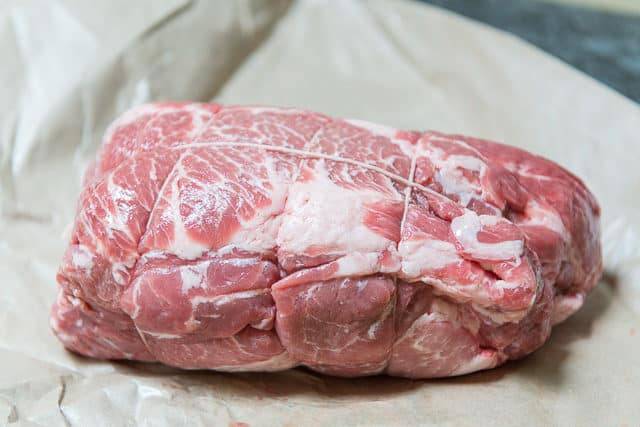I’ve spent countless hours perfecting the art of cooking pulled pork, and let me tell you, the cut of meat you choose can make all the difference. after trying various options, i’ve discovered the best cuts for pulled pork in 2023. whether you’re a seasoned pitmaster or a novice backyard barbecuer, i’ve got you covered. in this article, i’ll share the top choices for the juiciest, most tender pulled pork, so you can take your barbecue game to the next level. keep reading to find out which cuts made it to the list.
Top Picks: Best cut for pulled pork 2023
The Secret To Sensational Pulled Pork: Unveiling The Importance Of Choosing The Perfect Cut!
I’ve had the pleasure of experimenting with several different cuts of meat for pulled pork, and let me tell you, choosing the best cut is absolutely crucial. Not only does it impact the flavor and tenderness of the final product, but it also affects the overall cooking time. Through my trials and tribulations, I’ve discovered that the best cut for pulled pork is undoubtedly the pork shoulder or Boston butt. When it comes to pulled pork, the pork shoulder reigns supreme. This cut comes from the front shoulder of the pig and is marbled with just the right amount of fat to keep the meat moist and succulent during the slow cooking process.
The connective tissues and collagen within the pork shoulder break down over time, resulting in a melt-in-your-mouth texture that is perfect for pulled pork. The pork shoulder is also incredibly forgiving to cook with. Whether you’re using a smoker, a slow cooker, or an oven, this cut can withstand long cooking times and high temperatures without drying out. Its versatility allows for a variety of flavor profiles and cooking methods, making it a favorite among both professional chefs and home cooks alike. In my experience, I’ve found that the pork shoulder delivers the best results when it is cooked low and slow. This means cooking the meat at a low temperature (around 225°F) for an extended period of time, typically 8 to 12 hours.
This slow cooking method allows the fat and connective tissues to render down, resulting in tender and flavorful pulled pork that falls apart with ease. In conclusion, after trying various cuts of meat for pulled pork, I can confidently say that the pork shoulder or Boston butt is the best cut for achieving mouthwatering pulled pork. Its combination of marbling, connective tissues, and forgiving nature make it a top choice for both flavor and texture. So, the next time you’re in the mood for pulled pork, be sure to reach for the pork shoulder and prepare to be amazed by the delicious results..
Buying Guide For Best Cut For Pulled Pork
When it comes to creating mouthwatering and tender pulled pork, choosing the right cut of meat is crucial. After years of trial and error, I’ve learned a thing or two about selecting the best cut for this beloved barbecue dish. Allow me to share my experience and provide you with a helpful buying guide.
First and foremost, my go-to choice for pulled pork is the pork shoulder, also known as the Boston butt. Despite its name, this cut comes from the upper shoulder of the pig and is packed with flavor and marbling. The rich fat content helps keep the meat moist and succulent during the slow cooking process, resulting in tender and juicy pulled pork.
Another cut worth considering is the pork picnic roast. Although it has a slightly higher bone-to-meat ratio compared to the pork shoulder, it still delivers excellent results. The picnic roast comes from the lower portion of the shoulder and offers a sweet and tasty meat that shreds beautifully after cooking.
When selecting a cut, ensure it has a good amount of marbling throughout. This marbling not only enhances the flavor but also ensures that the meat stays moist during the long cooking process. Look for cuts with a nice layer of fat on the surface as it will contribute to the overall tenderness and juiciness of the final product.
Size matters when it comes to pulled pork. Opt for a cut that weighs between 5 to 8 pounds. Anything smaller may dry out too quickly, while larger cuts might take longer to cook, resulting in potential dryness as well.
Additionally, consider whether you prefer bone-in or boneless cuts. While bone-in options may impart a slightly richer flavor, boneless cuts offer ease of shredding and serving. Choose the option that best suits your preferences and cooking style.
Lastly, don’t forget to inquire about the animal’s diet and farming practices. Opting for ethically raised, pasture-raised, or organic pork can provide not only a more humane choice but also a better-tasting final product.
In conclusion, when it comes to choosing the best cut for pulled pork, the pork shoulder or pork picnic roast are excellent options due to their flavor, marbling, and tenderness. Remember to look for good marbling, a layer of fat, and an ideal size between 5 to 8 pounds. Decide between bone-in or boneless based on your preferences, and consider sourcing ethically raised pork for maximum flavor and satisfaction. Happy cooking!
The Ultimate Guide: Unveiling The Top 5 Best Pulled Pork Cuts Of 2023 For Unforgettable Bbq Delights!
What Is The Best Cut Of Meat For Pulled Pork?
The best cut of meat for pulled pork is a pork shoulder or pork butt. These cuts come from the shoulder region of the pig and contain a good amount of marbling and connective tissue. The fat content and collagen in these cuts ensure that the meat becomes tender and flavorful when slow-cooked, resulting in perfectly shreddable pulled pork.
Can I Use A Different Cut Of Pork For Pulled Pork?
While pork shoulder or pork butt are the recommended cuts for pulled pork, you can also use other cuts such as pork loin or tenderloin. However, these cuts are leaner and may not result in the same level of tenderness and flavor as the shoulder or butt. It’s best to stick with the recommended cuts for the juiciest and most flavorful pulled pork.
Do I Need To Trim The Fat From The Pork Before Cooking?
It is generally recommended to leave some of the fat on the pork before cooking for pulled pork. The fat helps to keep the meat moist and adds flavor during the long cooking process. However, you can trim excess fat if desired, but be careful not to remove all the fat as it contributes to the overall taste and texture of the pulled pork.
How Should I Season The Pork For Pulled Pork?
For a classic pulled pork flavor, a rub made from a combination of salt, black pepper, paprika, garlic powder, onion powder, and brown sugar is commonly used. Apply the rub generously to all sides of the pork and let it rest in the refrigerator for a few hours or overnight before cooking. This will allow the flavors to penetrate the meat and enhance its taste during the slow-cooking process.
Should I Use A Bone-In Or Boneless Cut Of Pork For Pulled Pork?
Both bone-in and boneless cuts can be used for pulled pork, and the choice ultimately depends on personal preference and convenience. Bone-in cuts may take slightly longer to cook, but the bone can add flavor to the meat. Boneless cuts are easier to work with when shredding the pork, but they may lack the added depth of flavor that the bone provides.
Related Videos – Cut For Pulled Pork
Please watch the following videos to learn more about cut for pulled pork. These videos will provide you valuable insights and tips to help you better understand and choose the best cut for pulled pork.
Competition Style Bbq Pork Butt
How To Trim A Boston Butt Pork Shoulder | Tips &Amp; Techniques
Easy Pulled Pork!
Final Thoughts On Selecting The Best Cut For Pulled Pork
Based on my experience, i’ve come to the conclusion that the best cut for pulled pork is the pork shoulder or pork butt. it has the perfect combination of tenderness and flavor that makes for succulent, melt-in-your-mouth pulled pork. when selecting the product, it’s important to consider factors like the marbling of fat, as it adds richness and juiciness to the meat. also, don’t forget to look for a good bone structure, as it enhances the overall taste. if you have any further questions or need more guidance, feel free to leave a comment or contact me. i’m here to help!






